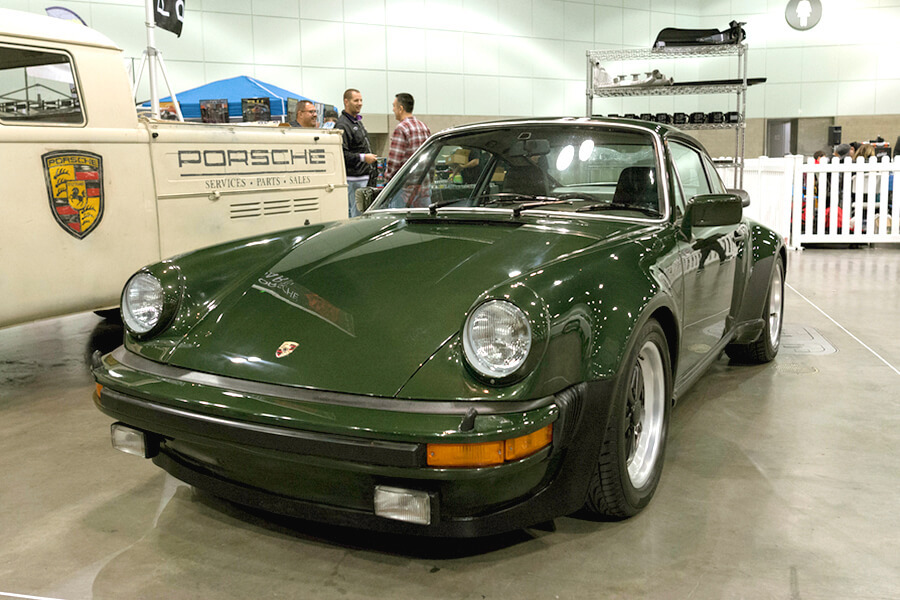
The Porsche 930 is an iconic vehicle for the legendary manufacturer. The 930 model was produced between 1975 and 1989. The 930 boasted the engine of the Carrera RS 2.7 but better. Porsche stepped up with a new and improved 3.0L engine and they were just getting started. By 1978, the engine was increased again to a 3.3L and an addition of an air to air intercooler. Porsche also updated the 930 brake system to more closely mirror those used on the Porsche racecars. These changes helped the 930 achieve an output of up to 300 horsepower, ensuring its place as a significant part of Porsche’s legacy. The 930 suffered manufacturing setbacks due to changes in racing regulations and while it was a speed lover’s dream. With the increased design and power, the 930 was made for skilled drivers but could be treacherous for those less experienced. High performance drivers could get the most out of the 930 while novices could benefit from outfitting their vehicles with top porsche performance parts. If you want to invest in a piece of Porsche history in the form of the 930, make sure that you also invest in the systems and parts that can help you make the most of your vehicle.
Peak Porsche 930 Performance Parts and Systems
Porsche parts are small but important pieces of overall systems that work together to ensure the speed and handling Porsche is known for. If you are focusing on performance parts, make sure you are paying close attention to the following:
- The Intercooler:
A high performance long neck intercooler allows for optimum air flow and lowers intake temperature. The radiator cools the turbocharged air before it goes into the engine. When the air is compressed it becomes heated so the intercooler cools the air before it goes to the engine. If your goal is speed, a high-performance intercooler should be a serious consideration. Factory intercoolers just won’t give you the same results.
- Turbocharger:
A turbocharger is operated by the exhaust system and has two sides. One side is hooked to the exhaust system; the exhaust spins the turbofan inside the turbocharger which in turn spins the fan on the intake side of the turbocharger to increase pressure and forced compressed air into the engine. The more rpm’s available the more the exhaust forces the fan to spin and the more air that goes into the engine. The more compressed air you can force into the system, the more you can increase the horsepower.
- Exhaust system:
The exhaust system increases air flow and horsepower. If you are looking to increase your Porsche’s performance use a quality upgraded exhaust system to enhance your power. An upgrade will allow the engine to get rid of the exhaust much more quickly and easily, dramatically increasing your vehicle’s horsepower.
- Upgraded piston and cylinders:
If you’re serious about performance and have the budget to invest in your car, purchase upgraded pistons and cylinders. These performance parts become expensive quickly because of the time and skill needed to install them. You, or a skilled Porsche specialist, will basically need to rebuild the engine from the ground up. The payoff may be worth it. High compression pistons increase the compression in the cylinder so much that it can cause preignition which could lead to serious engine damage or failure. To combat preignition issues, you will need to purchase racing fuel with a much higher octane and then sit back and enjoy the speed and increased horsepower.
They are many ways to improve the performance of your Porsche 930. So much will depend on your needs, wants and budget. The best way to improve your vehicle is to know what you want and work with a Porsche specialist that can find or create quality custom parts.
Porsche performance parts and why they matter
If you are looking to replace a part on your Porsche 930, it only takes one google search to find that people everywhere are selling Porsche parts. The difference between a part that is well crafted and built for your 930 versus a part that is poorly constructed could be the difference between improving your vehicle or killing it. That sounds dramatic but it only takes one poorly made fuel pump to inflict devastating damage to your vehicle. A faulty fuel pump can cause your engine to misfire or worst case scenario flood your engine with fuel necessitating expensive repairs.
The good news is there are ways to protect yourself. Purchase Porsche parts either as original equipment manufacturer (OEM) or have parts custom made by a reputable source. You are going to get out of your Porsche 930 what you put in. If you put in poorly made parts you are going to limit your vehicle’s performance and risk its longevity. As the 930’s age it becomes harder and harder to find quality genuine Porsche parts. At TurboKraft we will find or create whatever quality parts your Porsche needs. Our craftsmen have years of experience building and customizing Porsche’s and their parts to ensure your vehicle runs in peak condition and performance.

